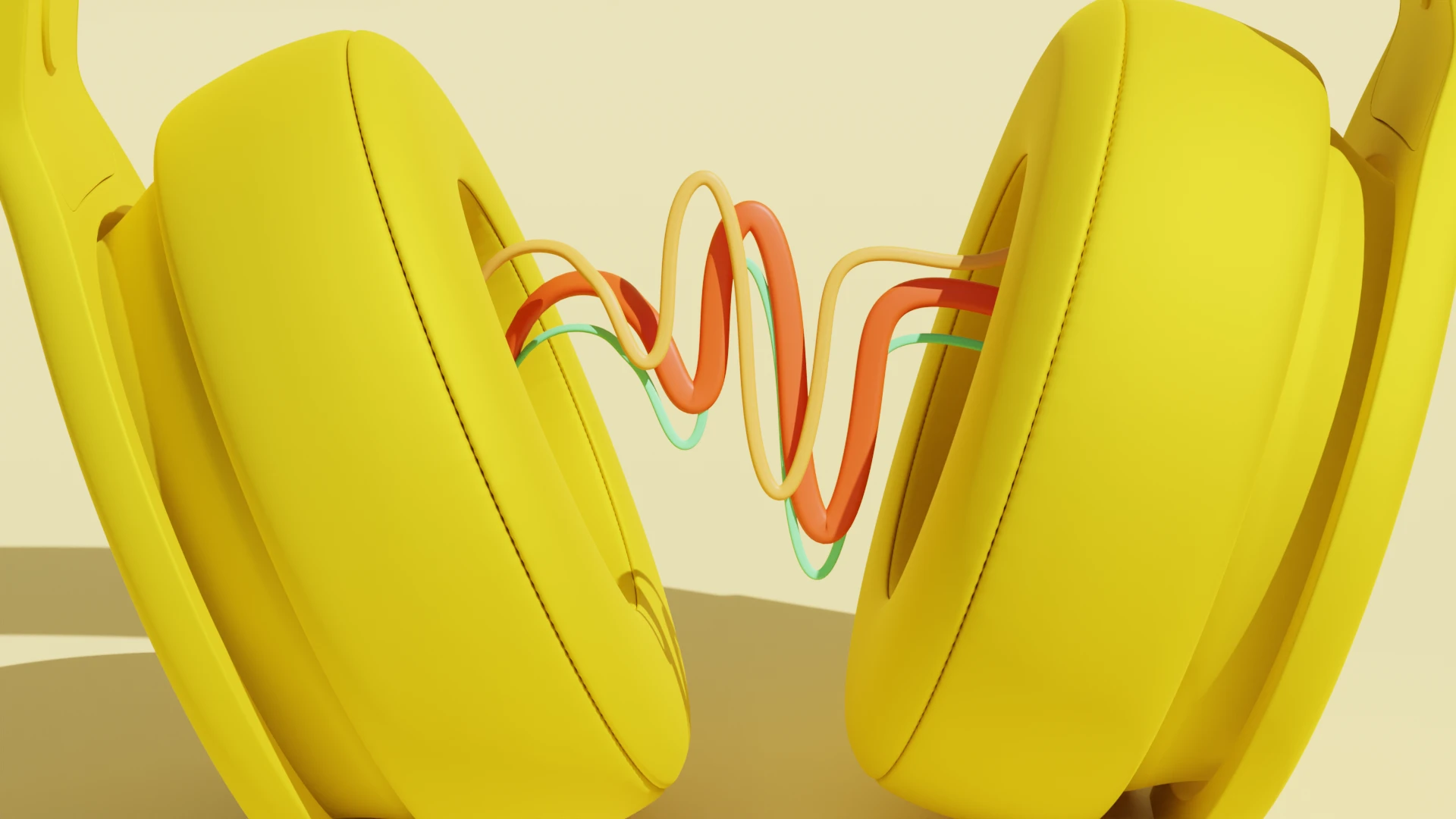What type of content do you primarily create?




In podcasting, audio quality is more than a technical detail; it's the essence of your content. A warm, crisp voice can captivate listeners, while background noise, echo, or tinny sound can distract them to the point where they turn away.
A century ago, recording sound meant hauling bulky equipment like a phonograph or a reel-to-reel recorder. Today, you can invest in a bunch of expensive professional recording equipment that will be a lot easier to fit into your hall closet—but might cost you a fortune.
You can also do voice recording on your iPhone—making podcasting and audio recording accessible to the masses. Whether you're a journalist on a breaking story, a podcaster conducting impromptu interviews, or an educator on a budget, the iPhone's Voice Memos app turns these scenarios from challenges into opportunities.
But what if you don’t have an iPhone or have an older one with lesser audio recording capabilities? You can still record on your phone—just use Descript’s Studio Sound feature to reduce the background noise and produce studio-quality sound, without the studio.
In this blog, we'll discuss why voice recording on the iPhone is a good option for podcasters or anyone who needs to do recording on-the-go. We will also cover how you can do voice recording on an iPhone.
6 reasons why voice recording on iPhone is a good choice for new podcasters
Voice Memos is Apple’s audio recording app on iPhone, iPad, Apple Watch, and Mac. It’s preinstalled on iPhones, and any other iOS users can find it on the App Store. Use it on any one of your Apple devices, and iCloud sync makes the recording available on all of them.
Here’s why using Voice Memos and iPhone is a great choice for recording a podcast — or any audio for that matter.
- Quality and noise reduction: Modern iPhones have a high-quality built-in microphone with noise reduction capabilities—plus, on supported models, you can turn on Stereo Recording in Settings > Voice Memos to capture richer, dual-channel audio.
- Cost-effective: Using the Voice Memos app on iPhone for podcasting eliminates the need to invest in an external iPhone microphone if you're just starting out or using software with advanced audio-optimization capabilities.
- Portability: The iPhone's compact size makes it easy to carry around, allowing for podcast recording on the go or in less-than-ideal locations without having to bring along bulky equipment.
- Ease of use: Recording with an iPhone is about as easy as making a phone call — just open the pre-installed Voice Memos app and hit record. It’s also a simple way to get good audio from podcast guests who don't have a mic: just ask them to record a voice memo and send you the file.
- Basic editing features: The Voice Memos app offers basic editing features that allow users to trim and replace sections of the voice recording.
- File sharing, collaboration, and availability in the Apple ecosystem: The iPhone's connectivity options and iCloud sync feature streamline collaboration, and you can easily access recordings across Apple devices.
Read more: How to start a podcast on YouTube
How to make a recording in iPhone's Voice Memos app
Here’s how you can use Voice Memos to record audio:
- Open the Voice Memos app: Open the Voice Memos app on your iPhone. You can find it in the Utilities folder or search for "Voice Memos" in the app search. Move it to the Home Screen for quick access.
 |
- Position your iPhone: Ensure your microphone faces you or the speaker for the best audio quality. If possible, record the audio in a quiet room without any scope of echo and background noise.
- Start recording:
- Click on All Recordings and tap the red Record button (🔴) to start. If you need a break mid-sentence, tap Pause and then Resume to pick up right where you left off—no need to create multiple files. In Settings > Voice Memos, you can also mute the start/stop tone if you prefer discreet recordings.
- Speak clearly and at an even volume until you see a waveform.
- For best results, hold the device to your ear as if you’re talking on the phone throughout the recording — that’s what the microphone was designed for.
 |
Pro tip: To avoid unwanted noise from notifications and phone calls, switch to Do Not Disturb Mode and Airplane Mode before recording.
- Stop recording: When you're done recording, tap ⏹️ or the red square button to stop the recording.
- Rename and save the recording: Tap the title and give your recording a name relevant to the audio’s content. That’ll help you organize your voice notes and quickly retrieve them.
 |
Pro tip: Enable "Location-Based Naming" in the Voice Memos settings to give Location access to the app. Doing this names the audio file based on the location where you recorded it. This is especially handy for field journalists covering multiple events in a day to quickly identify which recording corresponds to which place or event. Same with podcasters doing impromptu interviews, field researchers, and travel bloggers.
 |
- Optimize the sound quality: Click on the Playback Settings button (three horizontal parallel lines) in the bottom left corner and improve the audio quality by reducing the background noise by enabling the Enhance Recording button. Automatically remove the silence or skip over gaps in your recording using the Skip Silence button.
 |
You can also adjust the playback speed of the audio file.
- Edit the recording (optional)
- Click on the three-dotted icon next to the title, then tap "Edit Recording."
- Tap the area on the waveform where you want to insert new audio and click the red REPLACE button to continue recording. Click on Done when finished.
- Similarly, if you want to trim or delete the section of the recorded voice note, tap the icon on the top-right corner of the audio waveform to open the editing window, and then use the yellow scroll bars to trim or delete per your requirements. Tap Done after completing the required edits.
 |
How to enhance your podcast audio with Descript’s AI features
Creating a podcast on an iPhone is a viable option for beginners or anyone facing technical constraints. But while the Voice Memos app can record surprisingly high-quality audio, it doesn’t have advanced audio editing features. If you want more control over your podcast's audio quality—not to mention its content—consider using a dedicated podcast recording and editing tool like Descript, used by podcasts like Freakonomics, Song Exploder, and Conan O’Brien Needs a Friend.
Here’s how to edit your Voice Memos audio file using Descript:
- Transfer the file to your computer: Syncing audio files through Voice Notes is simple if you use a Mac. PC users: transfer via cable or internet-based file-sharing apps like Google Drive.
- Open Descript and create a new project.
- Import the audio: Drag your audio files directly into your Descript project. The software will automatically create the audio transcription and ask you to label speakers.
- Edit the voice note: Use Descript’s fully-powered editor to finalize your project:
- Remove filler words in seconds, cutting out the “um” and “uh” moments.
- Fix mistakes with Overdub, which can recreate your voice if you need a quick correction.
- Refine audio using AI-driven tools like Studio Sound (for noise reduction and clarity) and Regenerate (for smoothing out rough patches).
Finalize and share: Once you’re satisfied, manually upload your finished podcast to your chosen hosting service (or use one of Descript’s many hosting integrations). Submit your RSS feed to directories like Apple Podcasts and Spotify if you haven’t already.
Frequently asked questions
Where is the iPhone’s built-in voice recorder?
The preinstalled Voice Memos app on your Home Screen is your phone’s built-in voice recorder. If you don’t see it, check the Utilities folder or use the Search bar to find “Voice Memos.”
How can I record a phone call on my iPhone?
iPhones don’t offer built-in call recording. If you need to record a call, you must use a third-party tool or service. Always get consent before recording to comply with local laws.
Can I remove background noise from an iPhone recording?
Yes. You can use the Enhance Recording feature in Voice Memos to reduce mild background noise. For more advanced editing or noise removal, try a dedicated tool like Descript’s Studio Sound, which can produce cleaner, more professional audio.
How do I share my iPhone voice recordings?
In the Voice Memos app, select a recording, tap the More Actions button (three dots), and choose Share. You can send the file using AirDrop, Messages, Mail, or other apps. You can also upload recordings to the cloud or transfer them to a computer for editing in Descript.





























%201.svg)



















